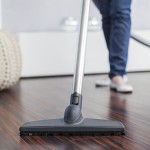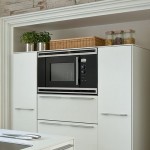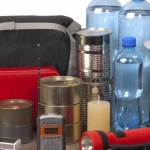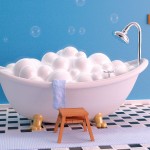
How To Clean All Germs In Your House
Did you know that to clean, vacuum, and dust your kitchen and bathrooms regularly is not enough to eliminate all germs in your house, far from that? A non-lucrative organization, NSF International, realized a study that tried to discover where are the germiest spots inside a home. Here are tips on how to best eliminate germs in your home following the discoveries of NSF’s study:
1- Kitchen Sponge/ Dishcloth
Bacterias like to multiply on warm and moist environments. Thus, kitchen sponge and dishcloth are bacterias haven ground. NSF proved that 70% of sponges after a three week use held bacterias, so utilizing them enables germs to proliferate all over the kitchen. So in order to prevent that, you can either place your sponge in the microwave for two minutes or in the dishwasher. Dishcloths on the other hand should be replaced on a daily basis.
2- Kitchen Sink
The kitchen sink is an ideal environment for the Salmonella and E. coli I. bacterias because of the combination of water and scraps of food. For optimal cleaning, make sure to clean daily the sink with hot soapy water. You can also, once or twice a week, clean with hot water and bleach; wear rubber gloves for protection. The Clorox Clean-Up Spray works also well with bleach, you can wipe the sink with paper towels.
3- Toothbrush Holder
The NSF states that an average toothbrush holder is home to more than 2 million cells of bacteria! To best eliminate them, place your toothbrush holder as far as possible from the toilet seat, at least 2 feet, and make sure everyone flushes the toilet with the lid down. Also, think to rinse the toothbrush with hot water after each use, keep an open toothbrush holder with good ventilation, and clean it on a weekly on a weekly basis with soap and hot water or by putting it in the dishwasher.
4- Coffee Maker
Everything warm and moist environment is bacteria-reproduction-friendly. The coffee reservoir in the coffee maker is warm and moist. So you can make the connection. To clean the water reservoir, every 30 days fill it with distilled white vinegar and water for 30 minutes. Run a cycle and then 2 or 3 other cycles by just adding water, until the vinegar fades away. This has also the advantage to improve your coffee’s taste.
5- Bathroom Faucet Handle
When you use the bathroom faucet handle, you handle to turn on the water and then handle again with wet hands to turn off the water. This will leave germs on the handle, so try cleaning daily the handles with a disinfectant cleaner or wipes. The best solution yet is to replace your old faucet with a touchless faucet.
6- Pet Food Bowl
If you have a pet, big chances are that your pet’s food and water bowls are crawling with bacteria. The bacteria from the pet’s mouth are passed down to the bowls and , if left unwashed, they will proliferate. This poses a health hazard to the pet as well as anyone who happens to handle the bowls. So make sure to wash the bowls and the scoop used to fill the bowls by using daily hot soapy water or the dishwasher.
7- Pet Toys
Don’t neglected to clean your pet toys too, it’s often missed. Wash the hard and rubber pet toys in warm, soapy water or the dishwasher, as you can see this cleaning method works practically for everything. On the other hand, the soft and plush toys should be put instead in the washing machines (make sure the tag allows it) and let them dry; don’t use bleach or other harsh chemicals; if the toy still smells bad or refuses to clean properly you should get rid of it.























